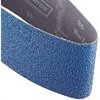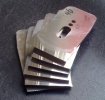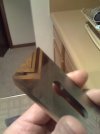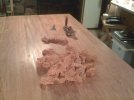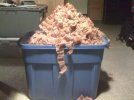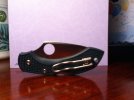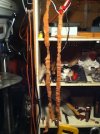- Joined
- Aug 11, 2016
- Messages
- 251
I have a few DMT diamond stones. I like using them for sharpening plane irons and chisels. I know these aren't knives, but it's sort of like a knife.
I bought several different grits. The coarsest grit they offered was pretty fine. I am wondering if anyone knows of a coarser product which will do the same job. I know I can get a coarse oilstone, but I want something that doesn't change shape. Plane iron and chisel edges have to be shaped pretty accurately.
I supposed I could put sandpaper on a surface plate, but I would rather have some kind of stone instead of screwing with paper.
I can always rig up a jig for the belt grinder or bench grinder, but power tools can burn steel pretty fast, and if you make a mistake while grinding, you can put a big gouge in a blade before you know it.
I bought several different grits. The coarsest grit they offered was pretty fine. I am wondering if anyone knows of a coarser product which will do the same job. I know I can get a coarse oilstone, but I want something that doesn't change shape. Plane iron and chisel edges have to be shaped pretty accurately.
I supposed I could put sandpaper on a surface plate, but I would rather have some kind of stone instead of screwing with paper.
I can always rig up a jig for the belt grinder or bench grinder, but power tools can burn steel pretty fast, and if you make a mistake while grinding, you can put a big gouge in a blade before you know it.

